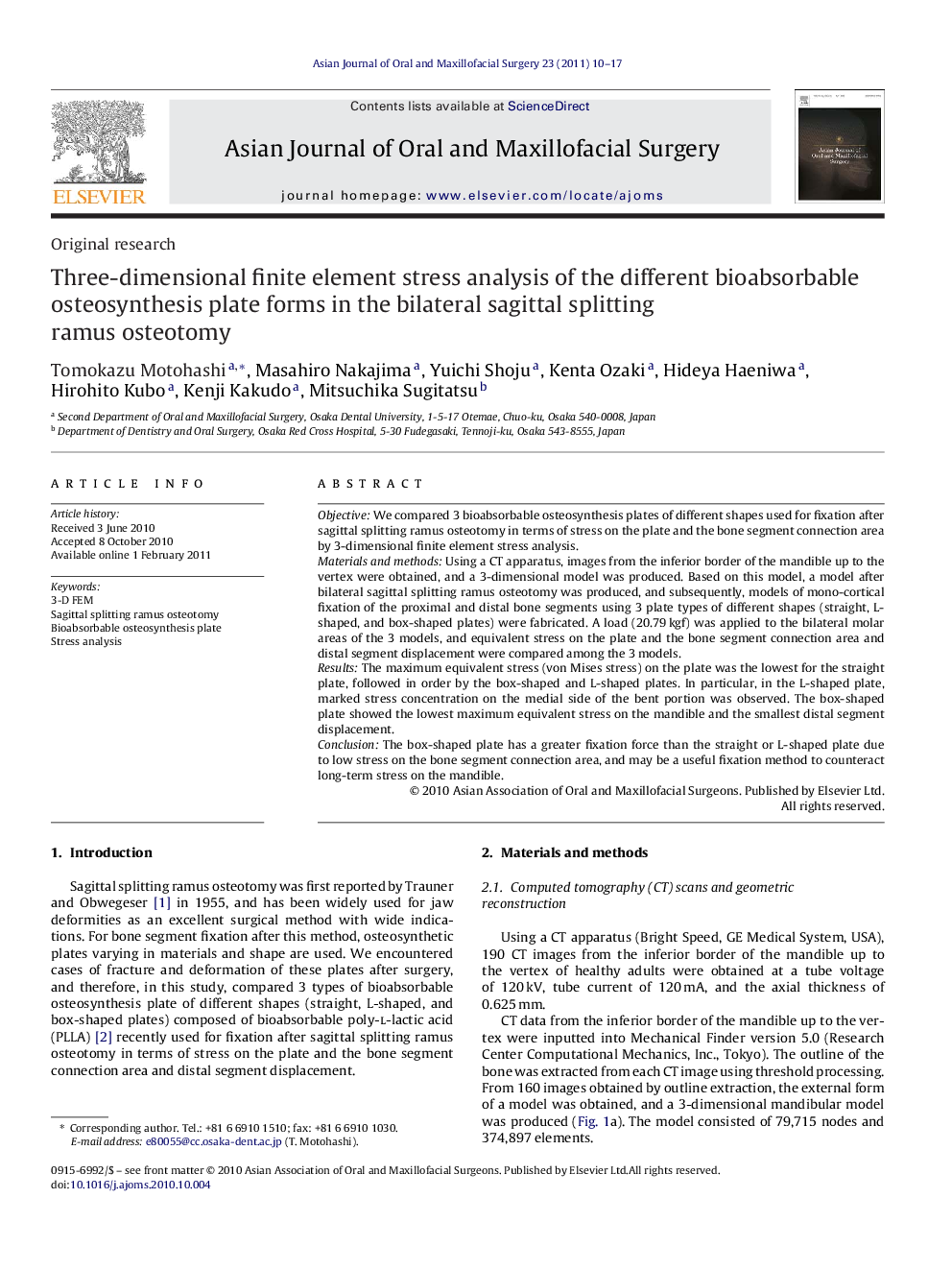| Article ID | Journal | Published Year | Pages | File Type |
|---|---|---|---|---|
| 3122090 | Asian Journal of Oral and Maxillofacial Surgery | 2011 | 8 Pages |
ObjectiveWe compared 3 bioabsorbable osteosynthesis plates of different shapes used for fixation after sagittal splitting ramus osteotomy in terms of stress on the plate and the bone segment connection area by 3-dimensional finite element stress analysis.Materials and methodsUsing a CT apparatus, images from the inferior border of the mandible up to the vertex were obtained, and a 3-dimensional model was produced. Based on this model, a model after bilateral sagittal splitting ramus osteotomy was produced, and subsequently, models of mono-cortical fixation of the proximal and distal bone segments using 3 plate types of different shapes (straight, L-shaped, and box-shaped plates) were fabricated. A load (20.79 kgf) was applied to the bilateral molar areas of the 3 models, and equivalent stress on the plate and the bone segment connection area and distal segment displacement were compared among the 3 models.ResultsThe maximum equivalent stress (von Mises stress) on the plate was the lowest for the straight plate, followed in order by the box-shaped and L-shaped plates. In particular, in the L-shaped plate, marked stress concentration on the medial side of the bent portion was observed. The box-shaped plate showed the lowest maximum equivalent stress on the mandible and the smallest distal segment displacement.ConclusionThe box-shaped plate has a greater fixation force than the straight or L-shaped plate due to low stress on the bone segment connection area, and may be a useful fixation method to counteract long-term stress on the mandible.
